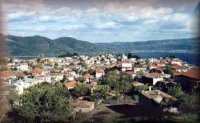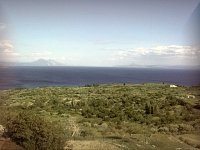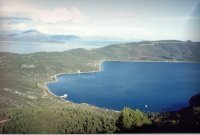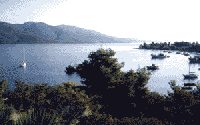|
|
| Man's presence in the area of Gialtra goes back to neolitic times. The first traces oh habitaion on the hill date from the New Stone Age, |
 |
 |
wheareas the settlement continued to exist until the late helladic period. Reseachers identify the classical and hellenistic settlement, which obviously had a greater extent than the ones before it, as the ancient town Athinai-Diadai. |
According to archeaological finds, the town was in existence up to Roman times. The naval maps of the Venetians refer to it Laturla: probably this is the source of one of the modern place name, Turla. |
 |
 |
Today Gialtra is located on two levels, the old upper village and the relativity new modern settlement by the sea. |
|
|

